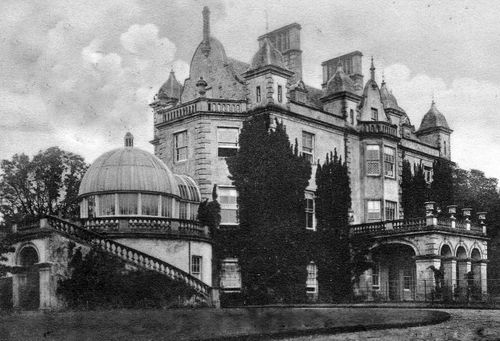Annotation:Arndilly's Reel: Difference between revisions
No edit summary |
No edit summary |
||
| Line 2: | Line 2: | ||
{{TuneAnnotation | {{TuneAnnotation | ||
|f_tune_annotation_title= https://tunearch.org/wiki/Annotation:Arndilly's_Reel > | |f_tune_annotation_title= https://tunearch.org/wiki/Annotation:Arndilly's_Reel > | ||
|f_annotation=[[File:Arndilly3.jpg|right|500px|thumb|Arndilly House, Craigellachie, Banffshire]]'''ARNDILLY'S REEL'''. AKA and see "[[Biodag | |f_annotation=[[File:Arndilly3.jpg|right|500px|thumb|Arndilly House, Craigellachie, Banffshire]]'''ARNDILLY'S REEL'''. AKA and see "[[Biodag air Mac Thòmais]]," "[[Canty Body]]/Brody." Scottish, Reel (cut time). A Major. Standard tuning (fiddle). AABB. John Glen finds the piece first published in Angus Cumming's 1782 collection (No. 21, p. 8), although as "[[Canty Body]]" it appears in Alexander McGlashan's collection of around the same time. Cumming (c. 1750-c. 1800) was from a long line of Speyside musicians. However, as William Lamb<ref>William Lamb, "Reeling in the Strathspey: The Origins of Scotland's National Music", '''Scottish Studies''', Vol. 36, pp 66-102, Jun 2013. </ref> points out, the word ''strathspey'' only appears in the title of his collection, and not with any of the tunes themselves; "the tunes were simply all 'Old Highland reels' to him." The boundary between what we think of as reels versus the syncopated strathspey was much more permeable to Cumming. Cumming's alternate title, "[[Biodag air Mac Thòmais]]," or 'Thomas's son wears a dirk', is a Gaelic dance song that was once distributed throughout the Gàidhealtachd. | ||
<br> | |||
<br> | |||
Arndilly House, home to the MacDowal-Grant family, was built in 1770, remodeled in 1826 and again in 1850, the latter in the Scots baronial style. | |||
|f_source_for_notated_version= | |f_source_for_notated_version= | ||
|f_printed_sources= | |f_printed_sources= | ||
Revision as of 16:44, 17 July 2022
X:1 T:Arndilly's Reell T:Bittae air Mac' homaich M:C| L:1/8 B:Cumming - A Collection of Strathspey or Old Highland Reels (1782, No. 21, p. 8) Z:AK/Fiddler's Companion K:A e|cA c/d/e c2 Ad|BG B/c/d {=c}B2 GB|cA c/d/e T^c2 Ad|BGdB A2A:| |:g|aeec aeef|=gddB gddg|aeec aeed|cABG A2A:|]

Arndilly House, home to the MacDowal-Grant family, was built in 1770, remodeled in 1826 and again in 1850, the latter in the Scots baronial style.
- ↑ William Lamb, "Reeling in the Strathspey: The Origins of Scotland's National Music", Scottish Studies, Vol. 36, pp 66-102, Jun 2013.

